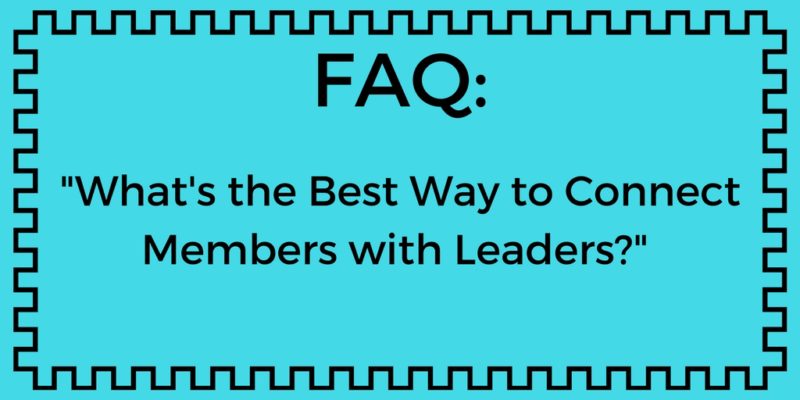FAQ: What Is the Best Way to Connect Member Sign-Ups with Leaders?
 FAQ: What Is the Best Way to Connect Member Sign-Ups with Leaders?
FAQ: What Is the Best Way to Connect Member Sign-Ups with Leaders?
I get questions. I get a LOT of questions. Sometimes they come directly to me via email or a comment here on the blog. Other times they come to me via a Facebook post or some other indirect route.
Here’s a question that was asked over on the Small Group Network Facebook page:
“Question, we just launched groups at our campus with a huge turn out. We received 80 (who want to lead a group) and over 230 people who want to join a group. How do you recommend that I reach out to them?”
Here’s how I answered the question in a Facebook Live video yesterday:
First, if you had a flux capacitor and could go back in time
First, if you had a flux capacitor and could go back in time, you should change the way you’ve taken sign-ups for your small group launch (see below for what to do if you don’t have a flux capacitor).
When taking sign-ups you probably want to let two principles guide you:
The only way anyone can sign up to lead a group is if they are committed to filling their own group. This is right at the heart of Saddleback’s HOST strategy. It is also core to the “if you’d like to do the study with a couple friends” strategy. See also, HOST: What Does It Mean? and Saddleback Changed the Church-Wide Campaign Game…Again.
Why is this important? Two important reasons: (a) You should only place members with leaders you have carefully vetted and (b) the best leaders can easily fill their own group. “I’d like to lead a group. Can you supply the members?” is an indication they are probably not the best candidate to lead.
When you take sign-ups to join a group it should always be a sign-up to attend a connecting event. Whether you are holding a Saddleback style small group connection, a GroupLink event (a la North Point), or a small group fair (common with the semester model), you definitely want to resist any suggestion that you will be matching sign-ups with a leader. See also, Distinctives of Three Types of Connecting Events.
Why is this important? When you take sign-ups to attend a connecting event (instead of sign-ups to be placed in a group), you avoid several things:
- Spending valuable time matchmaking (finding just the right group for every member) when you should be doing other things (i.e., recruiting and developing coaches, developing small group leaders, working with your senior pastor to help them champion small group ministry, etc.).
- Discouraging eager small group leaders when they attempt to invite the sign-ups you’ve given them (only to discover that they aren’t interested after all or don’t return the leader’s call).
- Discouraging eager small group sign-ups when the assigned leader doesn’t follow through or match up with their expectations.
Second, here’s what I would suggest you do if you can’t go back in time and do things differently:
- Invite the 80 who have signed up to lead a group to a “leader briefing.” At the leader briefing teach them how to fill their own group. You might use a handout like this to train them: Skill Training: Top 10 Ways to Help Leaders Find New Members for Their Group. In addition, you should supply them with what they need to get a group started (i.e., simple invite cards that can be filled out with contact info, handouts like The ABCs of a Great Start for Your Group, etc.). See also, How We Help a HOST Get Off to a Great Start.
- Invite the 230 to attend a small group connection. See also, How to Launch New Groups with a Small Group Connection.

